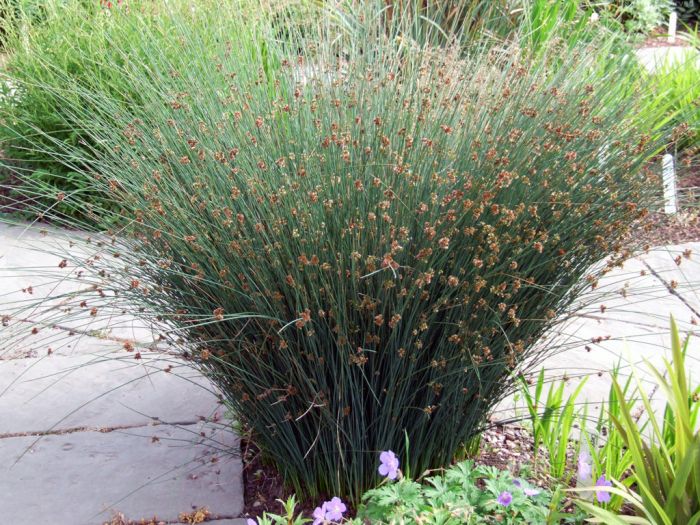Juncus, Rush 'Blue Arrows'



Out of stock
Coming soon, still growing- Sun Preference
- Full-Sun, Part-Sun
- Bloom Time
- June, July, August
Description
Grown for its stiff upright blue-green foliage, this variety is well suited to garden beds and mixed containers; can be grown as a pond plant but is also quite drought tolerant when grown in the garden
Minnesota's Largest Selection of Perennials
Discover an unparalleled selection of perennials at Gertens! With the largest variety in Minnesota, we offer endless options of colorful perennials, natives, and pollinator plants to beautify your garden year after year. From vibrant flowers to lush foliage, our perennials are perfect for adding beauty and charm to your outdoor space. Visit Gertens today and see why we're known as Minnesota's Destination Garden Center!
Details
Height: 3 feet
Spread: 16 inches
Sunlight: ![]()
![]()
Hardiness Zone: 4b
Description:
Grown for its stiff upright blue-green foliage, this variety is well suited to garden beds and mixed containers; can be grown as a pond plant but is also quite drought tolerant when grown in the garden
Ornamental Features
Blue Arrows Rush's attractive grassy leaves emerge lime green in spring, turning bluish-green in color throughout the season. Neither the flowers nor the fruit are ornamentally significant.
Landscape Attributes
Blue Arrows Rush is a dense herbaceous perennial grass with an upright spreading habit of growth. It brings an extremely fine and delicate texture to the garden composition and should be used to full effect.
This plant will require occasional maintenance and upkeep, and is best cut back to the ground in late winter before active growth resumes. It has no significant negative characteristics.
Blue Arrows Rush is recommended for the following landscape applications;
- Mass Planting
- General Garden Use
- Container Planting
- Bog Gardens
Planting & Growing
Blue Arrows Rush will grow to be about 3 feet tall at maturity, with a spread of 16 inches. Its foliage tends to remain dense right to the ground, not requiring facer plants in front. It grows at a fast rate, and under ideal conditions can be expected to live for approximately 8 years.
This plant does best in full sun to partial shade. It is quite adaptable, prefering to grow in average to wet conditions, and will even tolerate some standing water. It is not particular as to soil type or pH. It is highly tolerant of urban pollution and will even thrive in inner city environments. This is a selection of a native North American species.
Blue Arrows Rush is a fine choice for the garden, but it is also a good selection for planting in outdoor pots and containers. With its upright habit of growth, it is best suited for use as a 'thriller' in the 'spiller-thriller-filler' container combination; plant it near the center of the pot, surrounded by smaller plants and those that spill over the edges. Note that when growing plants in outdoor containers and baskets, they may require more frequent waterings than they would in the yard or garden. Be aware that in our climate, most plants cannot be expected to survive the winter if left in containers outdoors, and this plant is no exception. Contact our store for more information on how to protect it over the winter months.
| SKU | Container Size |
| G0247 | #1 Container (1 Gallon) |
* Not all container sizes may be available at this time. See store for details on specific container size availability.
More Information
| Common Family Name | Juncus |
|---|---|
| Gerten Grown Plants | Gerten Grown Plants |
| Sun Preference | Full-Sun, Part-Sun |
| Bloom Time | June, July, August |
| Mature Spread (Range) | 12" - 24" |
| Mature Height (Range) | 25" - 36" |
| USDA Hardiness Zone | 4, 5, 6, 7, 8 |


